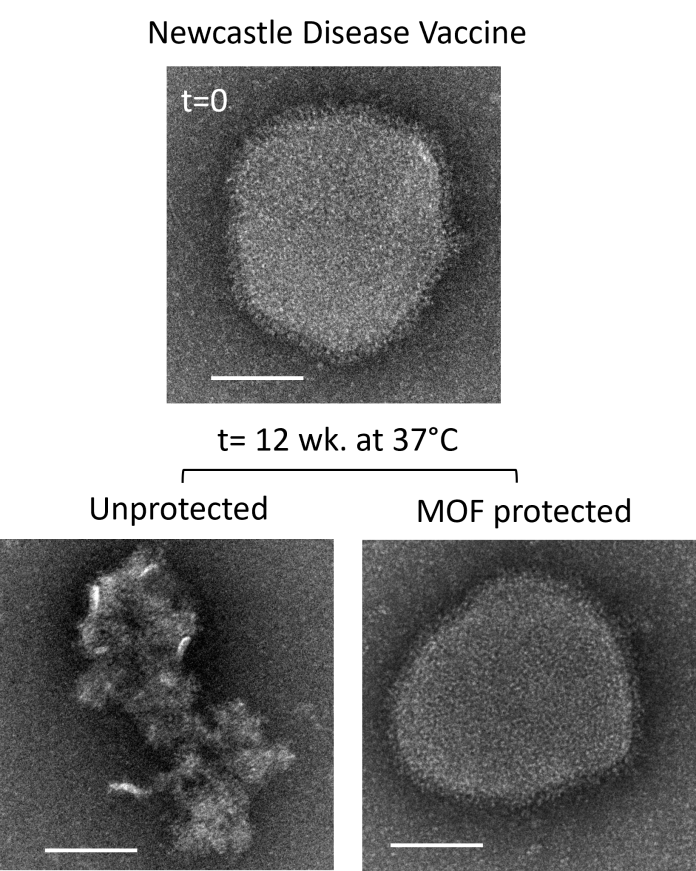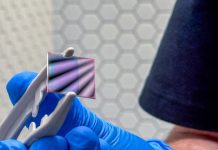
Media Release by CSIRO
Researchers at Australia’s national science agency, CSIRO, have developed a technique that addresses the challenge of transporting temperature-dependent vaccines, which researchers hope may increase access in rural and remote communities in Australia and developing countries.
The World Health Organization estimates that at least 50 per cent of vaccines are wasted globally each year, with a lack of facilities and temperature control the major cause.
Recently published in Acta Biomaterialia, CSIRO researchers encapsulated live virus vaccines with a dissolvable crystalline material called MOFs (metal organic frameworks), which protected the integrity of the vaccines for up to 12 weeks and at temperatures as high as 37 degrees Celsius. Without refrigeration the vaccines would otherwise last only a few days.
CSIRO scientist and immunologist, Dr Daniel Layton, said the breakthrough science would now focus on proving the approach for other animal and human vaccines, including mRNA COVID-19 vaccines.
“Vaccination is undoubtedly one of the most effective medical interventions, saving millions of lives each year, however delivering vaccines, particularly to developing countries, is challenging because they often lack the cold storage supply chains required to keep the vaccine viable,” Dr Layton said.
“Live virus vaccines are extremely effective, but their complex composition makes them susceptible to high temperatures, and a universal stabilisation technique has not been found.
“This breakthrough has the potential to enable more affordable and equitable access to vaccines across the world.”
The research focused on two different types of live viruses as proofs of concept, a Newcastle Disease vaccine designed to protect poultry and a strain of Influenza A.
When MOFs were formed around the vaccines they helped protect the vaccine molecules from heat stress. A solution was then used that dissolved the MOF for administration of the vaccine.
CSIRO senior scientist Dr Cara Doherty said MOFs were the perfect material for protecting vaccines from temperature variations.
“MOFs are a porous crystalline material that can grow around the vaccine to form a scaffold that protects against temperature variations,” Dr Doherty said.
“MOFs work similarly to a scaffold you might put around your house, once you remove the scaffold, your house remains – which is what happens when we dissolve the MOFs in a vaccine.”
CSIRO researcher and author of the paper, Dr Ruhani Singh, said the technique was cost-effective and scalable.
“There are two common approaches to protecting vaccines from heat. You can modify the vaccine, which is complex and laborious and at high temperatures may still only last less than a week, or you can use other stabilising agents which pose challenges including how to realistically scale up the solution,” Dr Singh said.
“This world-first approach of stabilising a vaccine with MOFs is simple, rapid, and scalable because it takes one step.”
The team continue to progress this research and are looking to partner with animal and human health companies to commercialise their work. Their research forms part of CSIRO’s biomedical research, which is aiming to generate new opportunities for Australian businesses and increase national sovereign capability.
The full article can be accessed at https://doi.org/10.1016/j.actbio.2022.02.002




















